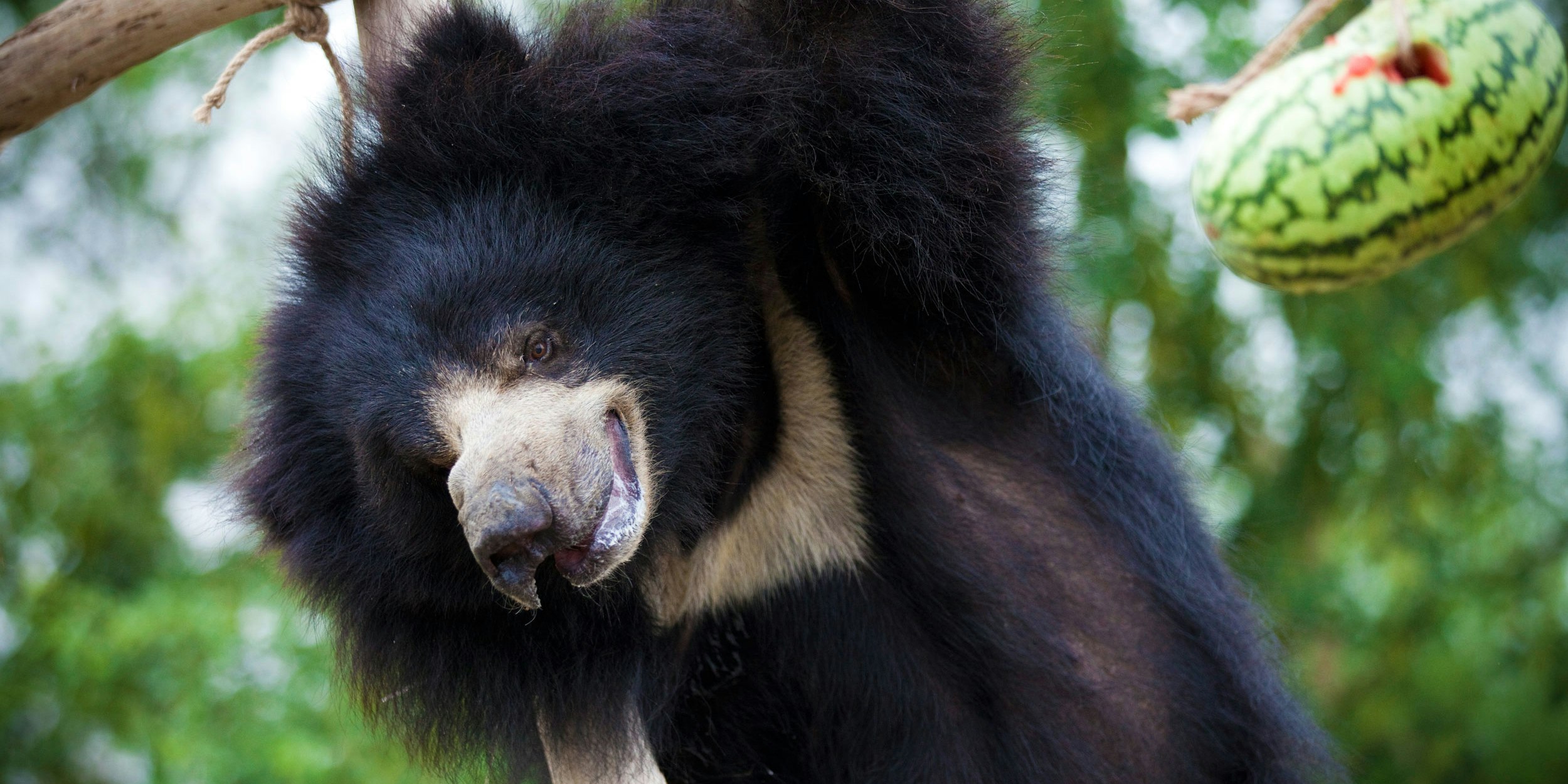- Author:
- Lauren Anderson
- Published:
- November 17, 2014
- Favorites:
- Tagged In:
- Student Travel India
Have you ever seen a bear dance? Outside of The Jungle Book, sloth bears aren’t meant to be dancing. That’s why Rustic Pathways and Wildlife SOS initiated a partnership designed to work with the rescued sloth bear population in Agra, India. Wildlife SOS is one of the premier wildlife conservation organizations in India. They work all across the country implementing wildlife and environmental conservation projects. This work often involves community rehabilitation, wildlife crime tracking, and animal rescue operations.

A very curious sloth bear checks out our photographer’s camera
For several hundred years, the Kalandar community – a nomadic tribe in North India – has trained sloth bears to dance and perform on the street as a source of income. Young sloth bear cubs would be poached from their forest habitat and their mothers would be killed. The cubs would then be sold to the Kalandar communities where they would live out their short lives at the end of a rope. In 1995, Wildlife SOS started a project to protect these dancing bears and have since rescued over 627 bears from the streets. In addition to giving the bears a new home, they have worked with the Kalandar families to provide vocational training, education for their children, and seed money to start new businesses. Kalandar families no longer have to depend on exploiting the bears to support their households. Many former bear owners now work at the Wildlife SOS rescue facilities, and others are being trained as support staff.

A glimpse into the Kalander community and its culture.
On the Rustic Pathways Dancing Bear Rescue Project, students experience life as bear keepers AND as bears! Students help bear keepers with their daily work, such as preparing and delivering meals for the bears, cleaning the bear pens and enclosures, and monitoring their behavior for research. In addition to the work with the keepers, students design and build enrichment structures to keep the bears stimulated mentally and physically. These enrichment structures promote natural behaviors such as climbing trees, digging into the earth, and searching for food, while at the same time limiting damaging stereotypic behavior – the swaying or pacing back and forth that you may see at zoos when animals have limited mental stimulation.

Rustic students hard at work building an enrichment structure for the bears.
In the summer of 2014, Rustic students spent 350 community service hours helping at the center, and built 4 new enrichment structures at the bear rescue facility! Learn more about the Rustic Pathways Dancing Bear Rescue Project on our website or listen to a TED talk given by Wildlife SOS co-founder, Kartick Satyanarayan. If you’re curious about sloth bears, you can learn more about them by visiting www.wildlifesos.org.
Lauren Anderson
Program Staffing and Training Director
Lauren joined Rustic Pathways in 2008 after graduating from Emory University. She spent her first six years in Costa Rica overseeing our operations and seasonal staff. Lauren then formed our Alumni Association where she developed programs for continuing student involvement. She now uses her extensive skill set to continue to improve the hiring and training of all program leaders across the globe. Lauren lives in Chicago, travels often, and enjoys maintaining her Spanish fluency.
